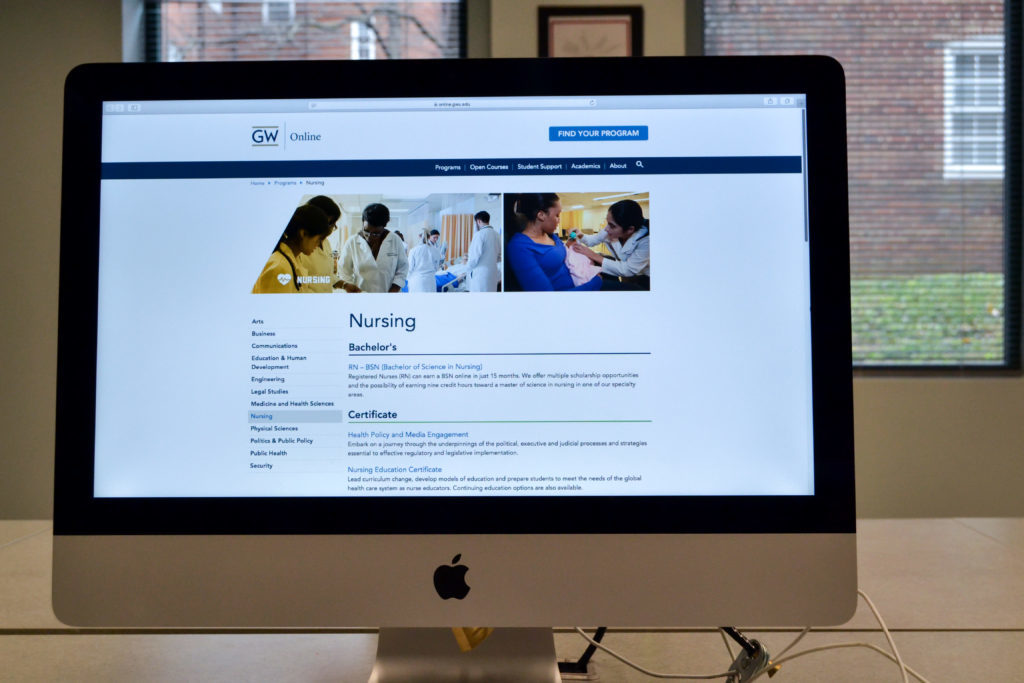Online enrollment in nursing programs has more than doubled since 2010.
Officials said enrollment in online nursing programs has increased from 329 students in 2010 to 846 students this fall – a more than 150 percent increase. The uptick in online enrollment included students in the school’s graduate certificate, Master of Science in Nursing and Doctor of Nursing Practice programs, officials said.
Jennifer Hayes-Klosteridis, the assistant dean for student affairs, said the nursing school has implemented “robust” recruiting and marketing strategies for its online programs, like several guaranteed admissions agreements between the nursing school and colleges across the nation.
Hayes-Klosteridis said it is still too early to measure how the school’s strategic plan – which was released in January and details seven major goals – has influenced the school’s online programs.
“Because the strategic plan was just released earlier this year, it’s still too early to properly measure this,” Hayes-Klosteridis said in an email. “We look forward to continuing to engage with our online students and tracking that engagement over the life of the strategic plan and beyond.”
Hayes-Klosteridis said the Office of Online Learning and Instructional Technology led an overhaul of online courses three years ago and built an office with five staff members, added the Quality Matters Teaching Online Certificate for instructors and added a studio dedicated to recording videos for online courses.
She added that the studio is currently expanding in size to offer more services for online learning and will be completed next year. Hayes-Klosteridis said the school also added several new certificate programs, including those for a psychiatric mental health nurse practitioner, adult-gerontology acute care nurse practitioner, health policy and media engagement and nursing education.
Hayes-Klosteridis did not specify when the certificates were added.
Nursing school experts said an increase in online programs and online enrollment can bring in more revenue for a university and can make a nursing program appear more competitive.
Monika Wedgeworth, an assistant professor of nursing at the University of Alabama, said enrollment in online programs has grown in recent years nationally because the courses allow a university to enroll more students while using fewer resources and classroom materials.
“You can have more students in the class, you can make a little bit more money for your college that way,” Wedgeworth said.
She said that although online programs tend to use fewer resources than in-person courses, a university still needs to dedicate enough faculty and create enough sections of programs to ensure student engagement.
“You don’t want to have an online class with 100 students in it, you want it to be relatively small so that they can interact with each other,” she said.
Nalo Hamilton, an assistant professor of nursing at the University of California, Los Angeles, said online programs have become a popular option for students because they offer options for working students who may not be able to attend traditional classes. She said online programs allow a school to double the number of students enrolled and make a bigger impact on the community by educating more nursing students.
“It makes nursing more accessible,” Hamilton said. “Over time, we are really contributing those nurses who are available to give care to the community.”
Kathleen Becker, a professor of nursing at the University of Southern California, said improvements in technology in recent years, coupled with the increased demand for an online platform for nursing students, has contributed to the rise of enrollment for nursing online programs. She said faculty should take advantage of the technology available by making their courses as interactive as possible and using different teaching strategies to engage online students.
“There are so many universities with an online presence now that it’s a much more competitive market,” she said. “That really affects enrollment because there are so many more opportunities for students, at really top-tier universities.”




